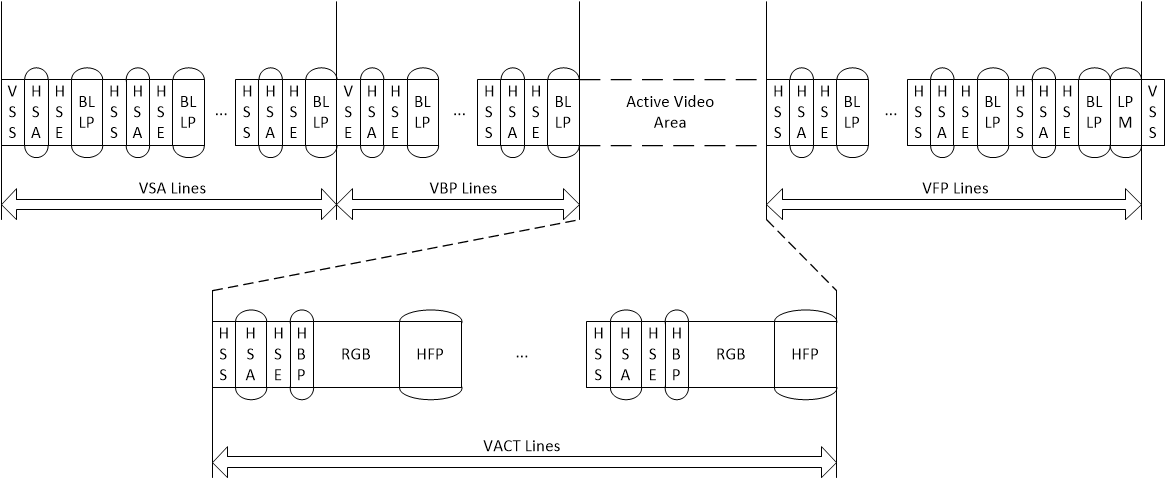SNLA356 September 2020 DS90UB941AS-Q1 , DS90UH941AS-Q1
2.4.1 Non-Burst Mode With Sync Pulses
- The DSI transmitter must convey accurate DPI-type timing for the HSS, HSE, VSS, and VSE packets, as well as the pixel transmission rate for each active line to match the desired video timing.
- All video timing can be extracted from the DSI packet stream directly including sync widths and porch widths
- The output pixel rate can be defined by the DSI clock rate in continuous clock mode or by the REFCLK source applied to the DS90UB941AS-Q1
 Figure 2-1 Non-Burst Mode with Sync Pulses
Packet Structure.
Figure 2-1 Non-Burst Mode with Sync Pulses
Packet Structure.